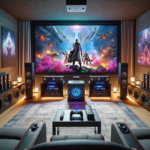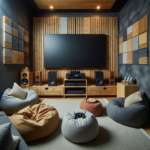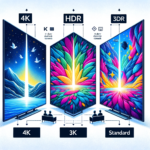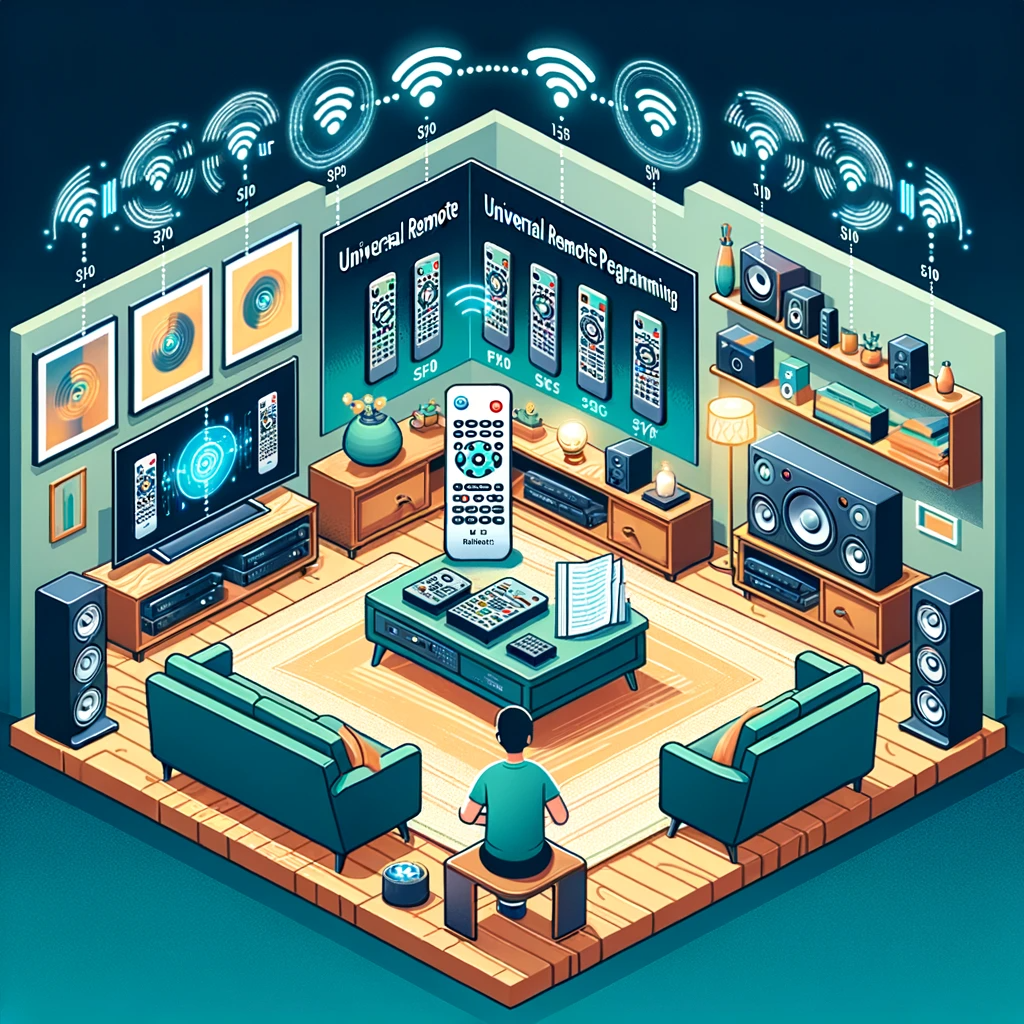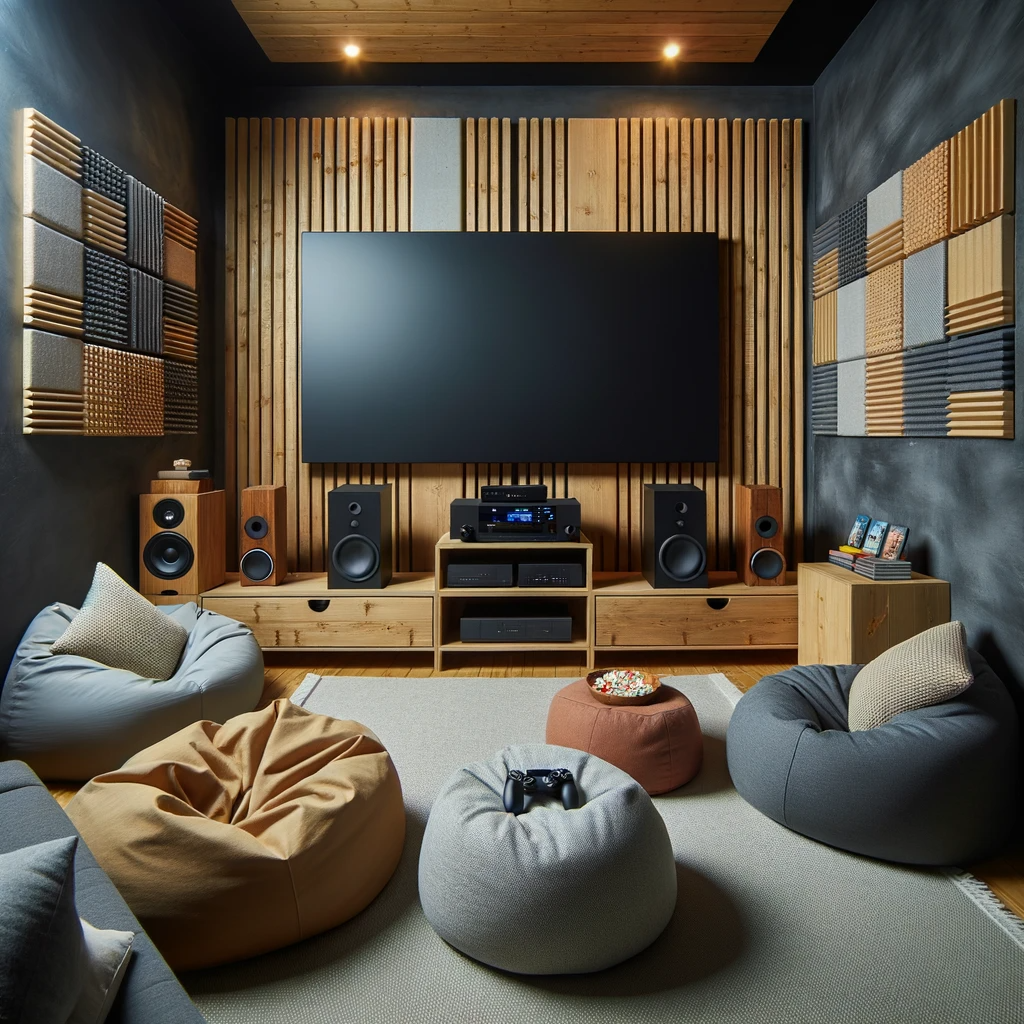Introduction
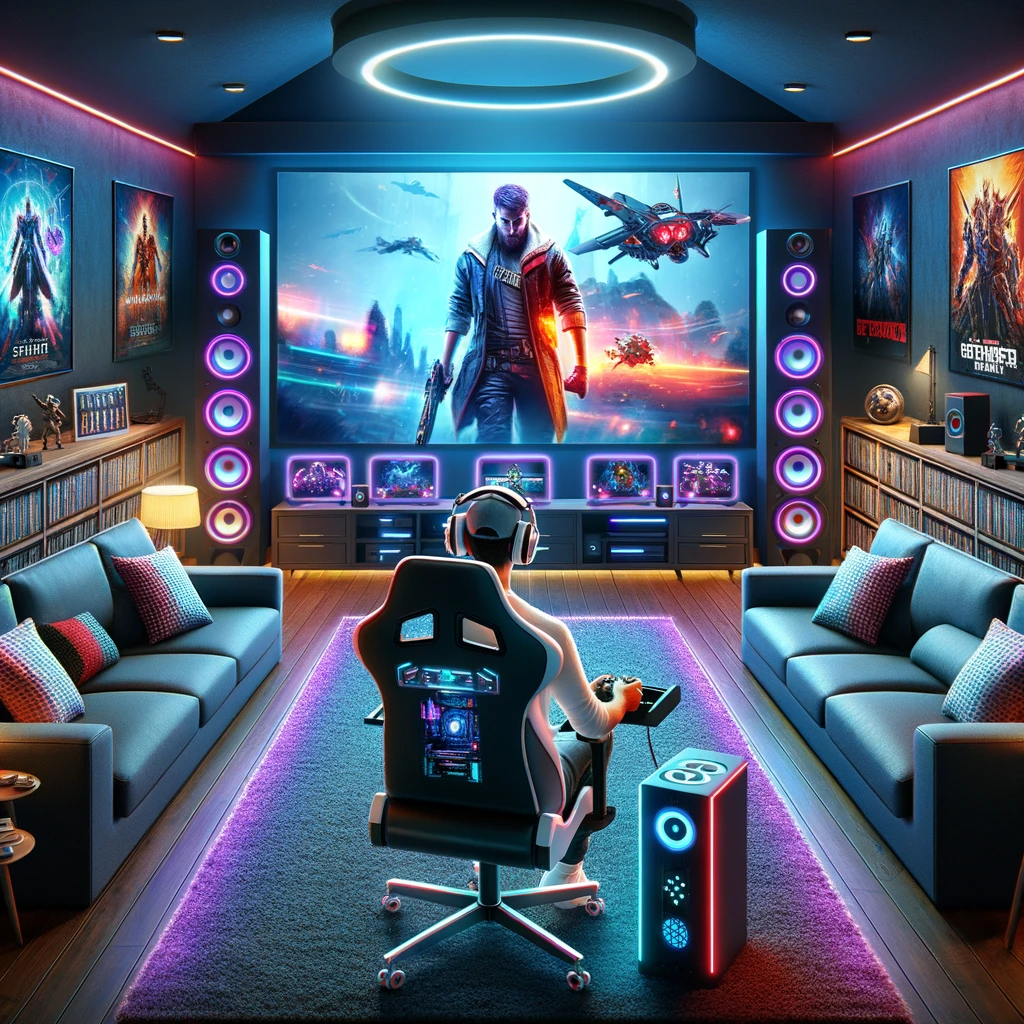
Brief overview of the growing popularity of gaming in home theaters. The popularity of gaming in home theaters has been steadily rising in recent years.
Importance of creating an immersive gaming experience. Creating an immersive gaming experience is crucial to fully enjoy and engage with the virtual world.
Purpose of the outline: to provide a comprehensive guide on enhancing gaming in home theaters. The purpose of this outline is to serve as a detailed guide that covers various aspects and techniques for enhancing the gaming experience in home theaters.
Choosing the Right Display
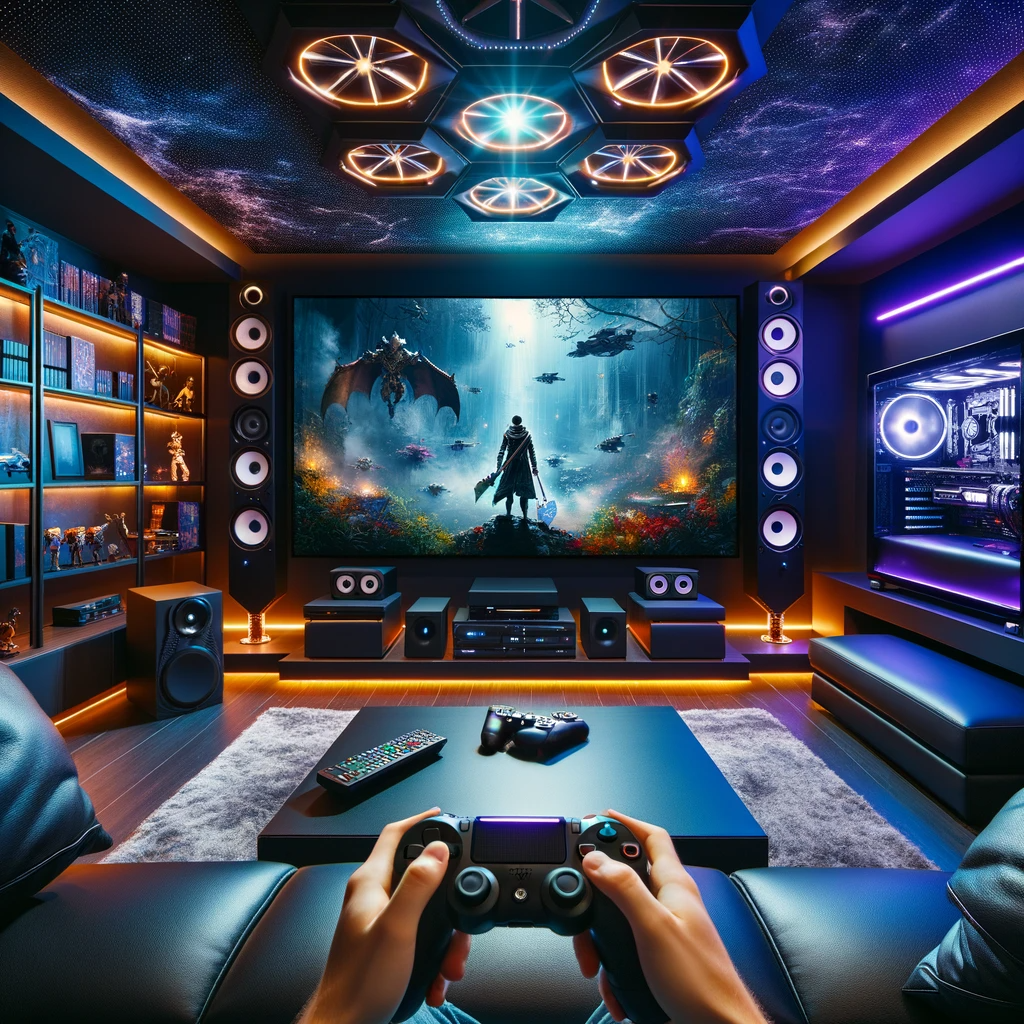
Comparing different types of displays (LED, OLED, QLED)
When setting up your home theater for gaming, it is crucial to choose the right display. LED, OLED, and QLED are three popular types of displays to consider. LED displays offer a cost-effective option with good picture quality and brightness.
OLED displays, on the other hand, provide deeper blacks and better contrast ratios due to individual pixel control. QLED displays utilize Quantum Dot technology for improved color accuracy and brightness levels.
Understanding refresh rates and response times
Refresh rates and response times are essential factors to understand when choosing a display for gaming. The refresh rate refers to how many times per second the image on the screen is refreshed or updated. Higher refresh rates like 120Hz or 144Hz result in smoother motion and reduce motion blur during fast-paced gameplay.
Response time measures how quickly pixels can change colors from one shade to another. Lower response times prevent ghosting or blurring during fast-moving scenes in games.
Selecting the appropriate screen size for optimal viewing experience
Selecting the right screen size is crucial for an optimal gaming experience in your home theater. Consider factors like viewing distance and the layout of your room when determining the screen size.
A larger screen can provide a more immersive experience but requires adequate space for comfortable viewing without straining your eyes or neck. On the other hand, if you have limited space or sit closer to the screen, a smaller display might be more suitable.
Audio Considerations for Immersive Gameplay
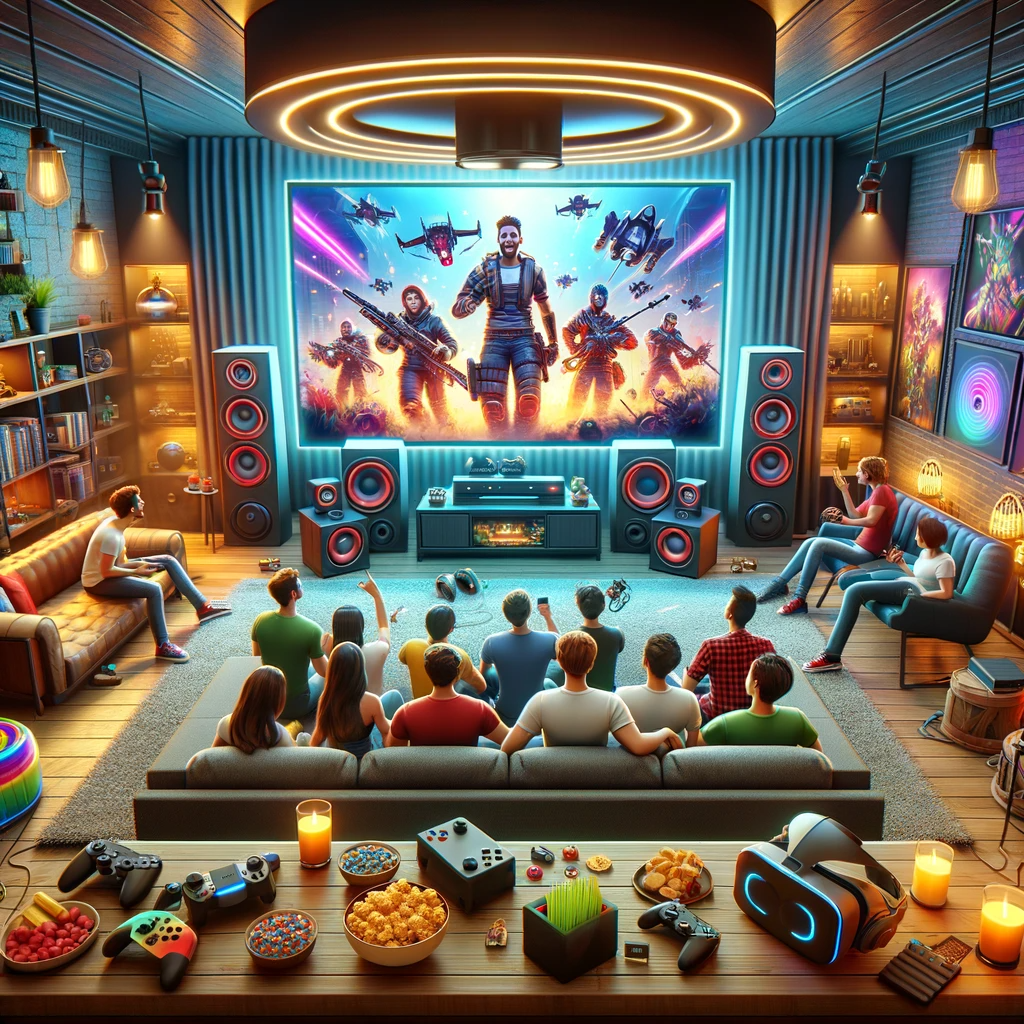
Exploring surround sound options (5.1, 7.1, Dolby Atmos)
To enhance immersion while gaming in your home theater, exploring surround sound options is essential. Common setups include 5.1 and 7.1 surround sound systems, which consist of multiple speakers placed strategically around the room to create a multidimensional audio experience. Dolby Atmos takes it a step further by adding height channels for overhead sound effects, providing a more realistic and immersive soundscape.
Positioning speakers strategically for optimal audio distribution
When setting up your home theater for gaming, positioning the speakers strategically is crucial to achieve optimal audio distribution. The front speakers should be placed at ear level and equidistant from the primary seating position.
Rear surround speakers should be positioned behind the viewer, while side surrounds should be set midway between the front and back of the room. By positioning them correctly, you can ensure that sound effects and dialogue are accurately localized in relation to on-screen action.
Utilizing soundbars or dedicated subwoofers for enhanced bass effects
To further enhance your gaming audio experience, consider incorporating soundbars or dedicated subwoofers into your home theater setup. Soundbars offer a space-saving solution with built-in speakers that can provide virtual surround sound.
They can easily be mounted below your TV or above it on the wall. Dedicated subwoofers are designed specifically to reproduce low-frequency sounds like explosions or deep rumbling noises in games, enhancing the overall bass impact and immersion in gaming sessions.
Choosing the Right Gaming Console or PC Setup
Subtitle: Finding Your Gaming Platform of Choice Comparing popular consoles like PlayStation, Xbox, and Nintendo Switch allows you to assess their specific features, game libraries, and online capabilities. Understanding the hardware requirements for high-end gaming on a PC involves considering factors such as processor speed, RAM capacity, and graphics card performance.
Additionally, it’s crucial to consider storage capacity to ensure you have enough space for all your games and media files. Backward compatibility is another significant factor to keep in mind—checking if your chosen console or PC setup supports playing older games from previous generations can expand your gaming options considerably.
Maximizing Visual Quality with Graphics Settings
Subtitle: Enhancing Your Visual Experience Explaining graphics settings like resolution, anti-aliasing, and texture quality helps you understand how they impact the visual fidelity of your games.
Resolution determines the number of pixels displayed on-screen and affects overall image clarity. Anti-aliasing smooths out jagged edges for a more polished look.
Texture quality enhances the level of detail in textures applied to objects within the game world. Tweaking these settings based on your hardware capabilities and personal preferences allows you to strike a balance between visual quality and smooth gameplay performance.
Optimizing gaming performance in home theaters requires careful consideration of both hardware choices and graphics settings. By choosing the right gaming console or PC setup that aligns with your preferences and needs, you can enjoy a vast library of games tailored to that platform.
Maximizing visual quality through graphics settings allows you to create immersive experiences with stunning visuals while maintaining smooth gameplay performance. Remember, finding the perfect setup takes time but is ultimately worth it when you immerse yourself in incredible gaming experiences right from the comfort of your home theater.

